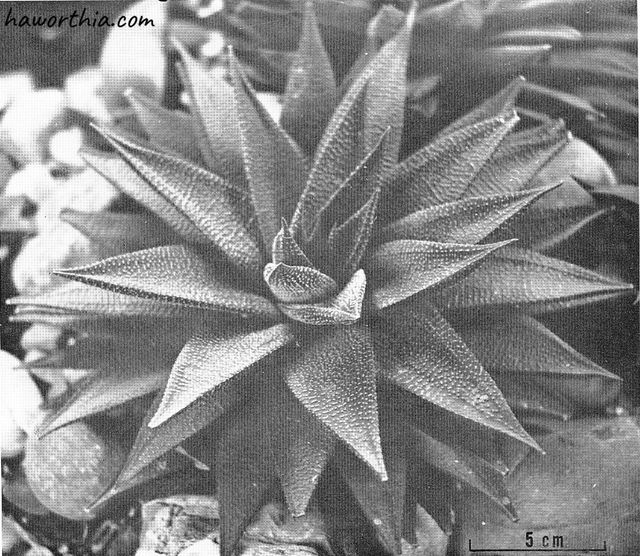历史
在17世纪下半,当欧洲人到达非洲南部时,文艺复兴已经展开了它的翅膀。知识界被刺激和质疑,傲慢与愚昧的信条被反驳。广泛的教育和书籍的印刷让学习可以在修道院以外进行。人类对自然界的好奇心被一条条来自海外新世界的传说不断提升——那边是有着惊奇的人、动物和植物生命的世界。
17-18世纪

1695。 关于十二卷的引用第一次出现在Hendrick Bernard Oldenland寄去荷兰的信件里,Oldenland是东印度公司花园的管理人。他列出了28种“芦荟”,其中一部分如今被认为是十二卷。他的描述随后被包括在在1703年Commelin印刷的《植物序言》(Praeludia Botanica)里。
1695。 The first reference to the plants, known today as Haworthia, occurs in letters sent to Holland by Hendrick Bernard Oldenland, who was superintendent of the gardens of the Dutch East India company. He listed 28 “Aloes”, and some of these plants we now consider to be Haworthias. Descriptions of these plants first appeared in print in 1703 in Commelin’s Praeludia Botanica.
1701. The first published references concerning Haworthias appeared in Jan Commelin’s Horti Medici Amstrelodamensis Rariorum Plantarum. The illustrations were made in Amsterdam from plants growing in the Hortus Medicus.
1753. The Species Plantarum of Carl Linnaeus is taken as the starting point of our modern binomial nomenclature for flowering plants. Some Haworthias are included in Linnaeus’s sense of Aloe.
The 19th Century
1804. Adrian Haworth grouped Haworthias in his section Parviflorae, indicating that he recognized a difference between them and the typical Aloes.
1809. Henri Duval separated the genera Haworthia and Gasteria from Aloe to be new species. These names were accepted by Haworth in 1812.
1880. John Baker recognized Haworthia as a separate genus, since Haworth’s death. Before that, there had been a tendency to revert the genus back to the Linnaean sense of Aloe.
The 20th Century
1908. Alwin Berger published the first monograph on the subfamily Asphodeloideae, which includes Haworthia.
1928-45. Karl von Poellnitz described over 200 new species and varieties, doubling the number of species.
1938-51. A.J.A. Uitewaal observed a natural division of the genus based on floral characteristics and established 4 sections: Triangulares, Hexangulares, Robustipedunculatae, and Gracilipedunculatae.

1976. Bruce Bayer divided the genus into 3 subgenera: Haworthia, Hexangulares, and Robustipedunculatae, deriving partly from the concept of Uitewaal.
The 21th Century
2013-2014. Gordon Rowley and John Manning et al., based on phylogenetic studies, divided the genus into 3 genera: Haworthia, Haworthiopsis, and Tulista.
